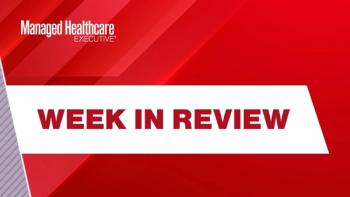
Study Finds No Spending Difference Between Voluntary, Mandated Bundled Payment Programs
Results run counter to common beliefs about the effects of self-selection into voluntary value-based payment programs.
One critique of many of the value-based program launched by CMS is that they have been voluntary. That self-selection clouds results, goes the critique, because hospitals (and physician practices) that elect to participate in a program likely have attributes going into the program that will make them successful. As a result, favorable outcomes or spending reductions may be misleading as a result.
But results reported in JAMA last week bya team of researchers led by Joshua M. Liao, M.D., M.Sc., of the University of Washington poked a hole in that critique and may color the debate about value-based programs. When Liao and his fellow researchers compared voluntary and mandatory bundled payment programs for hip and knee replacements, they found no difference in the spending reduction between the voluntary and the mandatory programs.
Their results do, though, argue for bundled payments because the difference in hip and knee replacement spending reductions between hospitals in bundled payment programs and those that not in them was large.
To conduct their study, the researchers compared hospitals in the voluntary Bundled Payment for Care Improvement (BPCI) program, which included hip and knee replacements, to hospitals in the Comprehensive Care for Joint Replacement (CJR) program, which had a\ mandatory component. The crux of the study was a comparison before and after bundled payment among 92 hospitals who voluntary participated in bundled payments, 744 hospitals who were mandated to participated and 879 nonparticipating hosptials.
The before and after bundled payment spending difference was $2,730 ($21,182 – 18,452) among the voluntary hospitals. Among the mandatory hospitals, the before and after was $2,738, ($18,390 – 15,652), so only $8 separated the voluntary and mandatory hospitals.
Among the nonparticipating hospitals, hip and knee replacement costs fell by $2,261 (17,132 – 14,871) during the same interval. That works ous to be a spending reduction that was $469 smaller than voluntary hospitals before- and after bundled payments and $477 less per episode than the mandatory hospitals.
Newsletter
Get the latest industry news, event updates, and more from Managed healthcare Executive.

















































